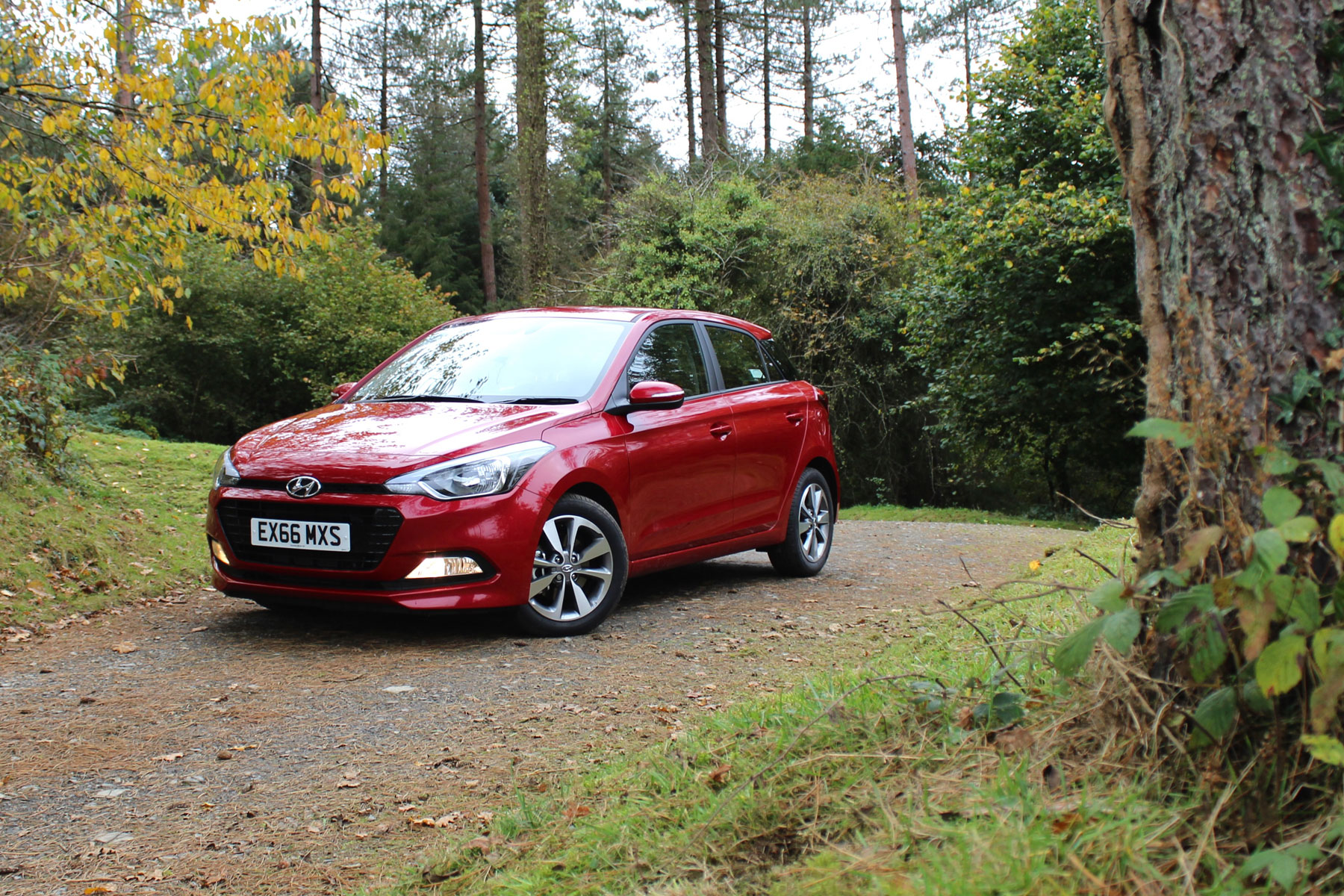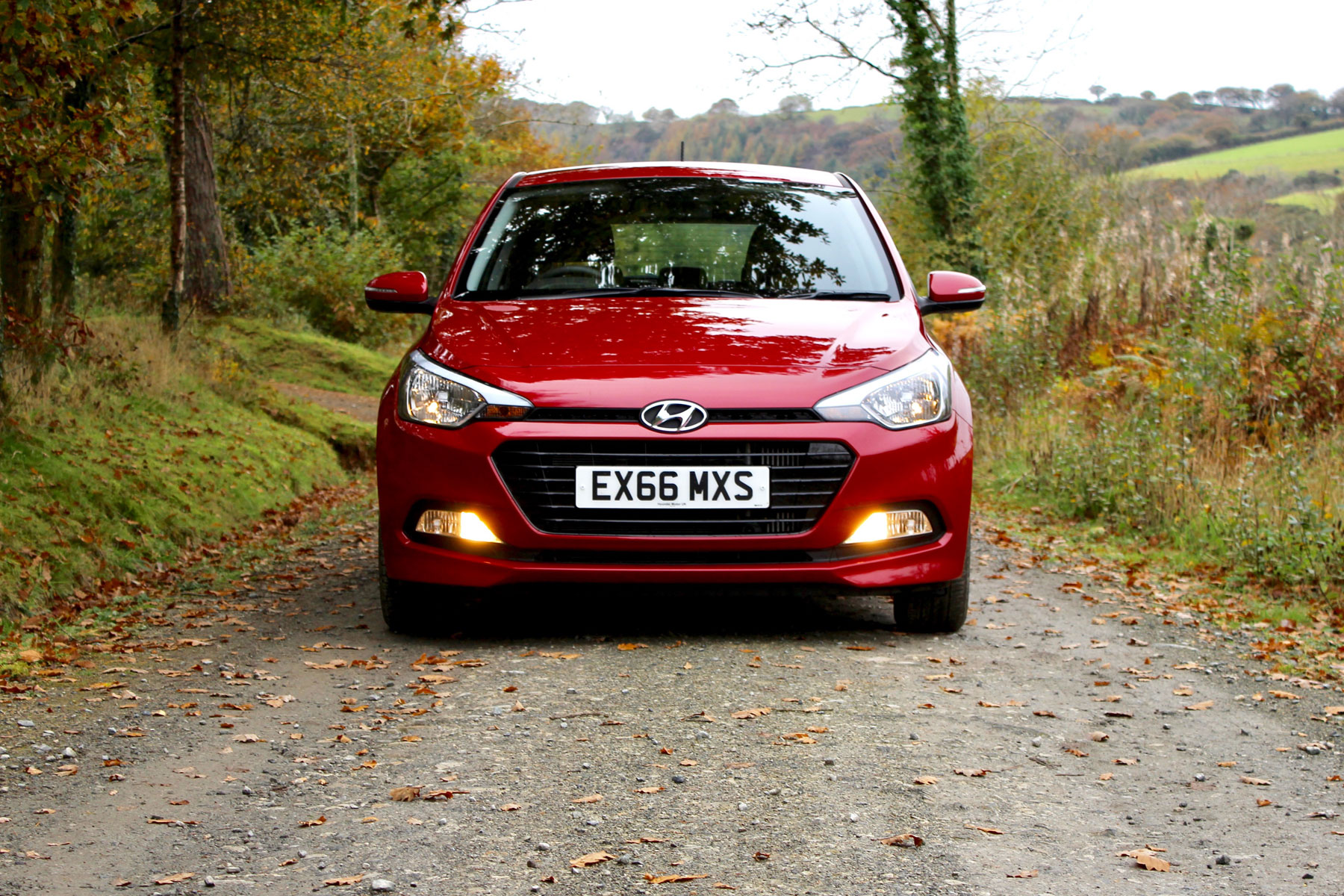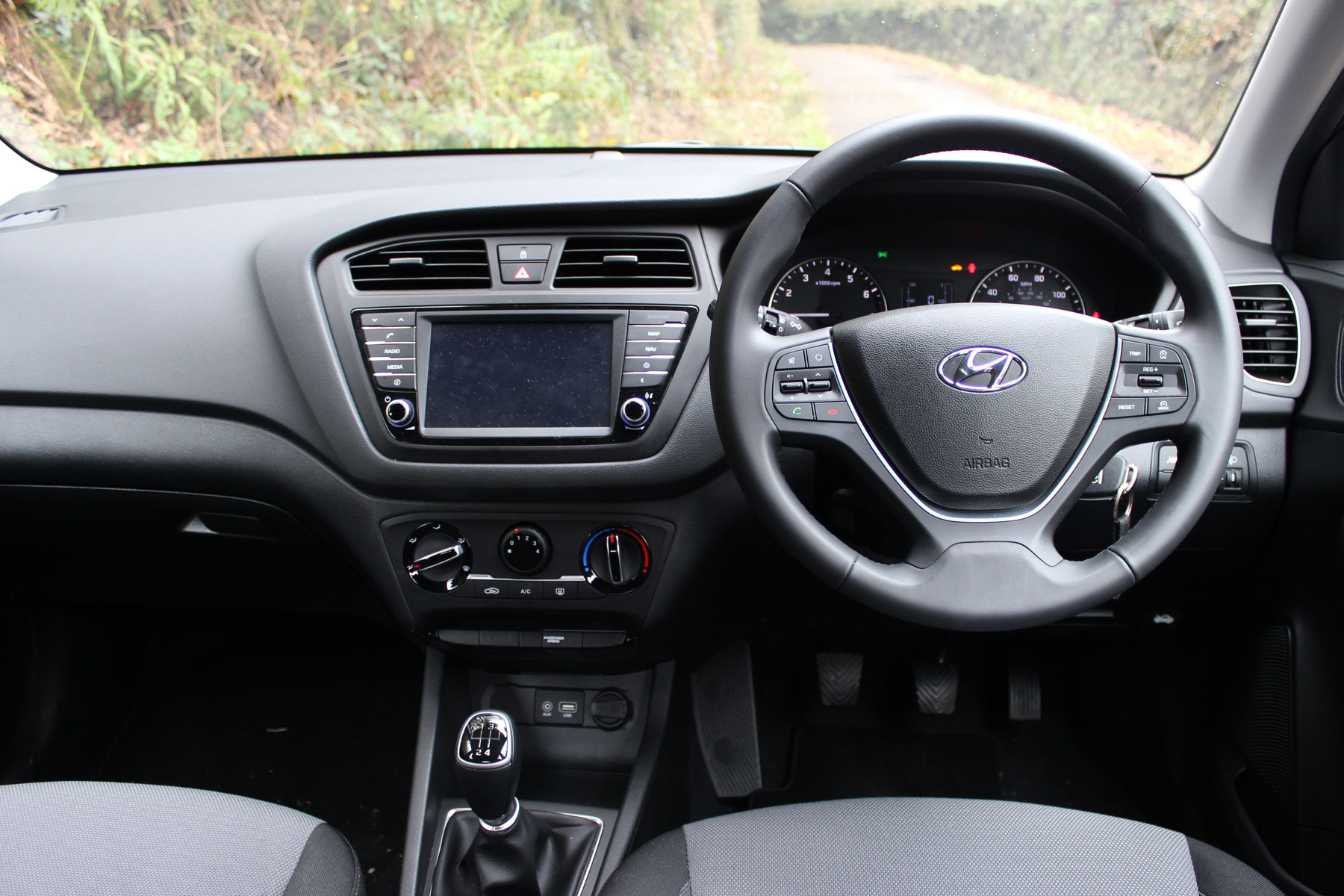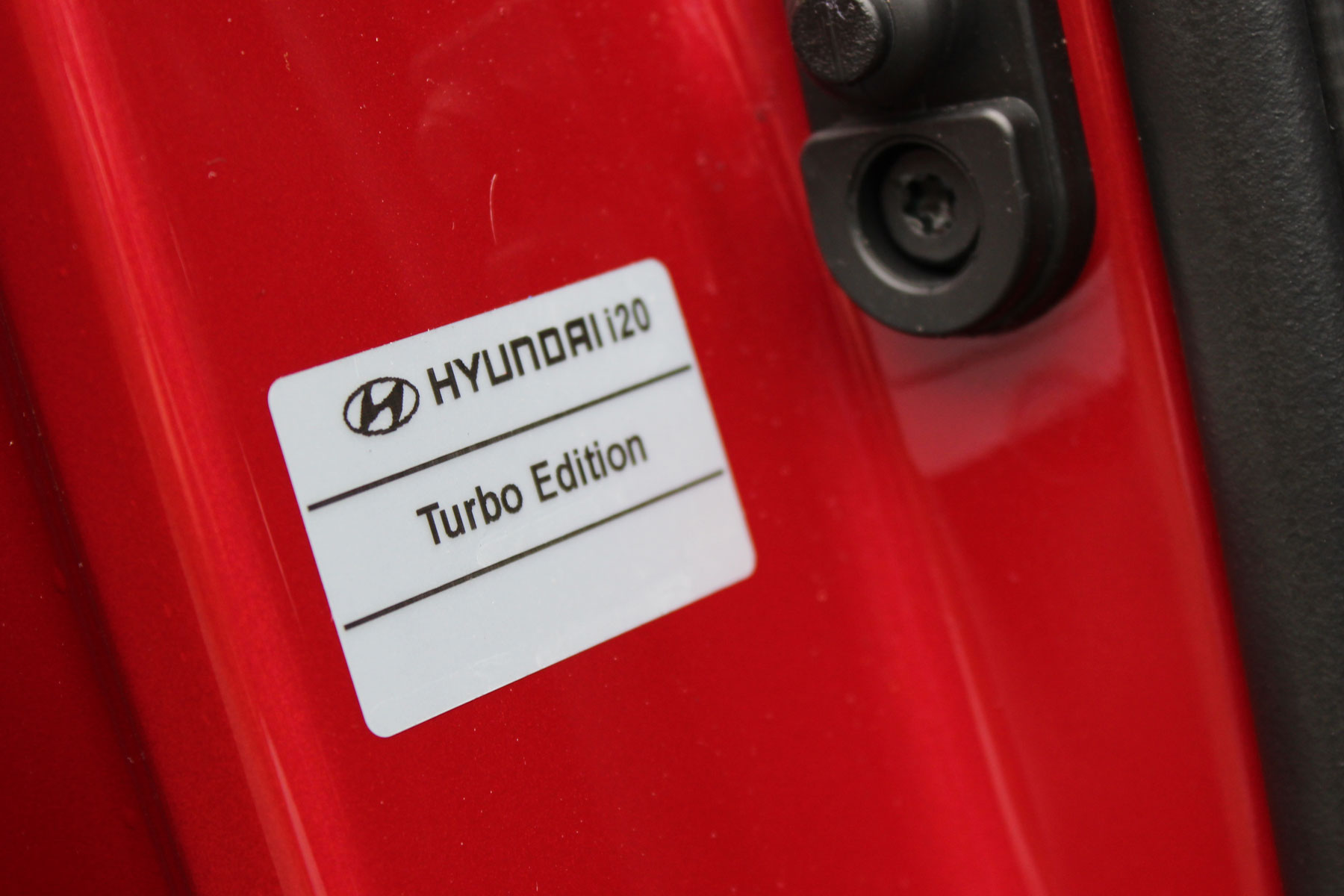
Visit the microsite for the new Hyundai i20 Turbo Edition and the Korean firm will do its best to convince you that the turbocharged supermini is packed with racing DNA. “Discover the road-going i20 lurking beneath the exterior of Hyundai’s latest World Rally Car,” it says.
You’ll have seen the advertisement: the i20 WRC car gets down and dirty on a forest stage, before making its way through a sleepy village and a petrol station car wash. The question is: has the Hyundai i20 Turbo left its “racing DNA” in the autowash? Read on to find out.
- Snapped: Uber is mapping UK roads in a Hyundai i20
- Hyundai i20 Active: Two-Minute Road Test
- Read another car review on Motoring Research
Prices and deals
The headline price is £12,795, but given the fact that the majority of customers will pay monthly, the more relevant cost is £165 per month.
For this, you’ll need to part with a deposit of £2,970 plus VAT and be restricted to 8,000 miles a year. That should be enough for a few special stages, mind.
What are its rivals?
The i20 Turbo Edition lines up against some fierce competition, not least the all-conquering Ford Fiesta. But a recent price hike means that Fiesta prices start from £13,545 – or £14,545 if you opt for the 1.0-litre EcoBoost engine.
Other rivals include the Vauxhall Corsa 1.0-litre Turbo, Skoda Fabia, Mazda 2 and Volkswagen Polo.
What engine does it use?
The “racing heart” of the Hyundai i20 Turbo Edition is its 1.0-litre turbocharged three-cylinder engine. The 998cc unit develops 100hp at 4,500rpm and 127lb ft of torque between 1,500 and 4,000rpm.
How fast?

Floor the “racing throttle” (actually, Hyundai hasn’t used this line), and the i20 Turbo rockets to 62mph in 10.7 seconds – 0.5 seconds quicker than a Fiesta 1.0 EcoBoost with an equal amount of power.
The top speed is 116mph – 4mph more than the Fiesta. In reality, the i20 Turbo feels even faster, helped in no small part by the delightful/irritating (delete as applicable) thrum of the three-cylinder engine.
Will I enjoy driving it?
In short: yes. Beneath that rather sombre – read: disappointingly normal – exterior lies a car that’s genuinely good fun to drive. There’s a hint of old-school turbo lag to get through, but once the turbocharger has woken from its slumber, it’s playtime.
It doesn’t beg to be taken to the redline, like say the Suzuki Swift Sport, but it’s surprisingly eager and there’s a thumping load of mid-range torque. Furthermore, the steering is nicely weighted, while the five-speed gearbox is a joy to use. Whisper this: but this is an i20 you can buy with your head and your heart.
Fuel economy and running costs
Hyundai claims you could achieve 72.4mpg on a combined cycle, but you should take that figure with a pinch of racing salt. Over the course of a week, the display was showing a figure of 37.7mpg, although admittedly we spent the majority of the time exploring those rally credentials.
CO2 emissions of 104g/km puts the i20 Turbo Edition in VED band B, which means no road tax in year one, followed by £20 for each year thereafter. As you’d expect, the i20 comes with Hyundai’s excellent five-year warranty.
What’s the interior like?

Peek inside the Hyundai i20 Turbo Edition and you’ll find a pair of Sabelt racing seats, a tall sequential gearbox lever, paddle shifters on the steering wheel and a multi-point roll cage. It feels every inch the rally-bred road car.
Actually, none of this is true. Instead you’ll find the standard i20 interior, with Hyundai making no effort to make this special edition feel any more, well, special. We think this is a missed opportunity. It’s pleasant enough, but hardly inspiring.
Is it comfortable?
Yes, it’s comfortable, but we’d be prepared to sacrifice a little comfort in exchange for more in the way of fireworks. As it is, the i20 feels surprisingly grown up, with plenty of space in the front and rear. There’s a hint of body roll if you attempt too many ‘hard rights’ and ‘easy lefts’ at full pelt, but the seats offer plenty of lateral support to keep you in place.
Is it practical?
In the boot you’ll find 301 litres of luggage space, which extends to 1,017 litres with the 60:40 rear seats folded down.
There are many pockets and storage compartments, including a place for your smartphone in front of the gearlever, two cupholders between the front seats and generous door bins. Rear seat passengers will also find plenty of legroom and headroom.
Tell me about the tech
The Hyundai i20 Turbo is generously equipped, including a 7-inch touchscreen sat nav, a free seven-year TomTom Live subscription, Bluetooth, DAB radio, parking sensors, steering wheel controls, auto lights and a rear-view camera.
A Magneti Marelli engine control unit and direct communication with the works team engineer are both optional. Probably.
What about safety?
The Hyundai i20 was awarded a four-star Euro NCAP safety rating when it was tested in 2015, scoring 85% for adult occupants, 73% for child occupants, 79% for pedestrian safety and 64% for safety assist.
Standard safety equipment on the i20 Turbo Edition includes hill-start assist, six airbags, lane departure warning system and ISOfix child seat anchorage points.
Which version should I go for?

Hyundai is limiting the i20 Turbo Edition to just 1,000 cars, but you’ll be able to choose from six different colours, including Passion Red, as tested. Sadly, the colours are a little sombre, with even Passion Red more ‘garden centre café’ than it is ‘rally stage service area’.
Sorry to make a big thing of this, but this was an opportunity for Hyundai to capitalise on its rally pedigree. Some additional badges, an interior makeover and some subtle tweaks to the suspension could have made a good car great.
As it is, you’re left with a measly Turbo Edition factory sticker on the door frame.
What’s the used alternative?
The previous generation Hyundai i20 was introduced in 2009 and is the most obvious used alternative. Prices start from as little as £1,700. Buy a later car and the i20 might still be covered by the five-year manufacturer warranty.
Other used options include the Kia Rio, Mazda 2, Suzuki Swift and Vauxhall Corsa.
Should I buy one?
Don’t let our misgivings about Hyundai’s lack of effort to add a touch more WRC to this special edition put you off, because the i20 Turbo Edition is a thoroughly good car. We often found ourselves nipping out for a quick drive, because it’s properly fun to drive. If there’s a hint of petrol running through your veins, you’ll love the turbocharged three-pot engine.
It’s also seriously well equipped and offers tremendous value for money. It might not be as sharp as a Ford Fiesta, but it offers a nicer interior and is a touch quicker on the straights. We really enjoyed our week with the i20 Turbo Edition and would recommend it to anyone who is in the market for a supermini.
Pub fact

The Hyundai i20 WRC car is powered by a 1.6-litre turbocharged engine developing 300hp. Unlike the road car, it features four-wheel drive and a six-speed transmission, and can sprint to 62mph in under 4.0 seconds, reaching a top speed of 139mph.
ALSO READ
Nissan Navara 2016 road test review